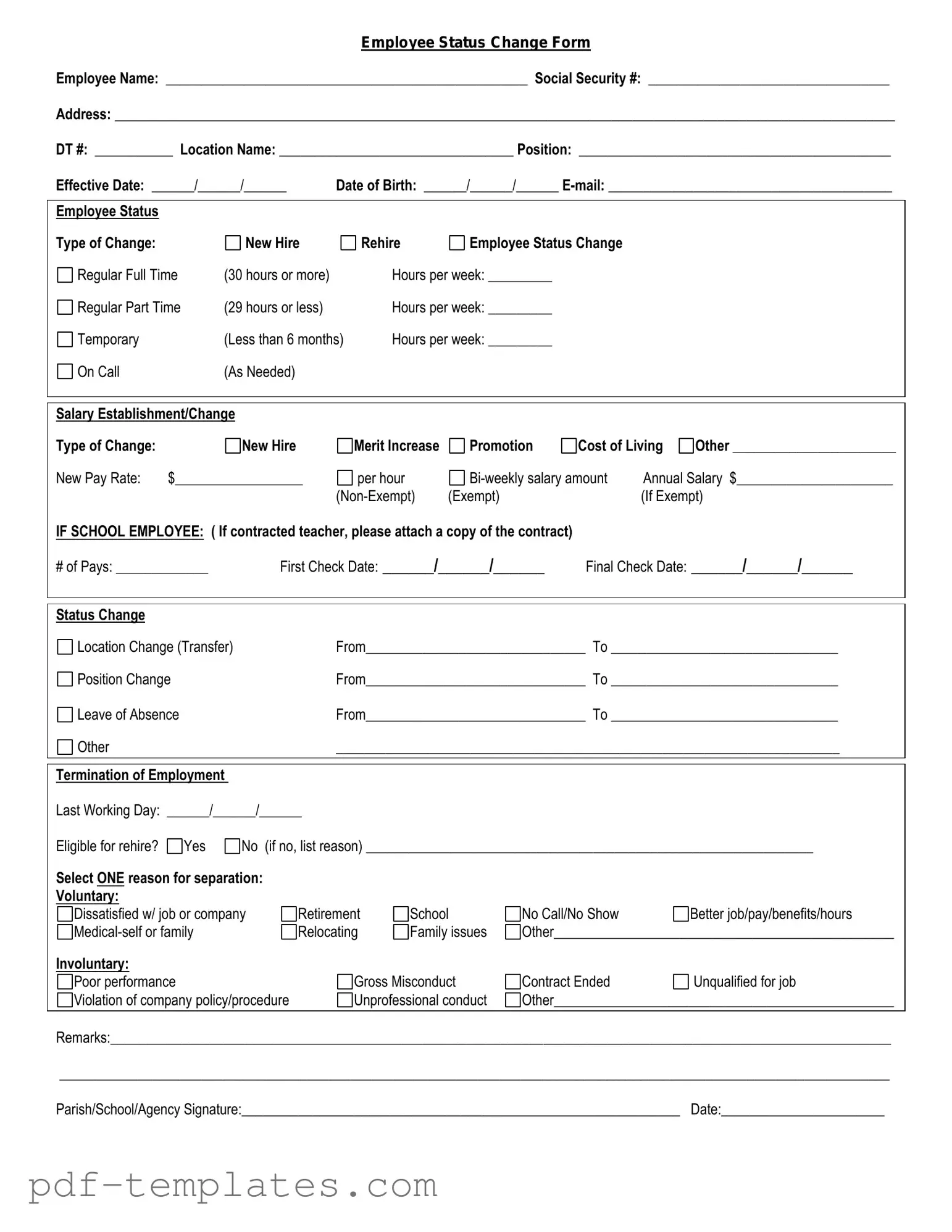The Employee Status Change form shares similarities with the Employment Application form. Both documents capture essential information about an employee's role within the organization. The Employment Application is typically completed at the start of employment, while the Employee Status Change form is used to document changes in employment status, such as promotions or transfers. Each form helps ensure that the company maintains accurate records regarding employee information and job responsibilities.
Another document that resembles the Employee Status Change form is the Termination Notice. This form is used when an employee leaves the company, whether voluntarily or involuntarily. Like the Employee Status Change form, it requires specific details about the employee and the reasons for the change. Both forms are crucial for maintaining clear communication and documentation regarding employment status changes within the organization.
The Performance Evaluation form is also similar to the Employee Status Change form. While the Performance Evaluation focuses on an employee's job performance, it can lead to changes in status, such as promotions or salary adjustments. Both documents require input from supervisors and help track an employee's progress and contributions to the company. They serve as tools for managing talent and recognizing achievements.
For those seeking to appoint someone to make important decisions on their behalf, understanding the General Power of Attorney form is key. This document provides significant authority for financial and property management, ensuring that your interests are represented effectively. For more information, check out this comprehensive General Power of Attorney guide.
The Leave of Absence Request form is another document that bears similarities to the Employee Status Change form. Both forms address changes in an employee's work status, albeit for different reasons. The Leave of Absence Request form is specifically for employees seeking time away from work, while the Employee Status Change form captures broader changes. Each form requires approval and helps ensure that the organization can manage staffing effectively.
The Job Transfer Request form is closely related to the Employee Status Change form as well. Employees use this document to request a change in their job location or department. Both forms facilitate communication between employees and management regarding changes in employment status. They ensure that the organization can track and manage internal movements effectively.
Finally, the Onboarding Checklist can be compared to the Employee Status Change form. While the Onboarding Checklist is used for new hires, it serves a similar purpose in documenting important employee information. Both documents help ensure that all necessary steps are taken to update employee records. They play a vital role in maintaining accurate information throughout an employee's journey within the organization.
